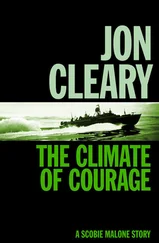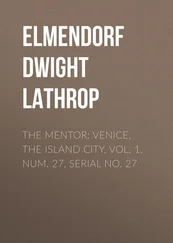The Climate City
Здесь есть возможность читать онлайн «The Climate City» — ознакомительный отрывок электронной книги совершенно бесплатно, а после прочтения отрывка купить полную версию. В некоторых случаях можно слушать аудио, скачать через торрент в формате fb2 и присутствует краткое содержание. Жанр: unrecognised, на английском языке. Описание произведения, (предисловие) а так же отзывы посетителей доступны на портале библиотеки ЛибКат.
- Название:The Climate City
- Автор:
- Жанр:
- Год:неизвестен
- ISBN:нет данных
- Рейтинг книги:4 / 5. Голосов: 1
-
Избранное:Добавить в избранное
- Отзывы:
-
Ваша оценка:
- 80
- 1
- 2
- 3
- 4
- 5
The Climate City: краткое содержание, описание и аннотация
Предлагаем к чтению аннотацию, описание, краткое содержание или предисловие (зависит от того, что написал сам автор книги «The Climate City»). Если вы не нашли необходимую информацию о книге — напишите в комментариях, мы постараемся отыскать её.
Provides professionals in finance, technology, and consulting with solutions for improving the quality of urban life under the changing climate The Climate City
The Climate City:
The Climate City
The Climate City — читать онлайн ознакомительный отрывок
Ниже представлен текст книги, разбитый по страницам. Система сохранения места последней прочитанной страницы, позволяет с удобством читать онлайн бесплатно книгу «The Climate City», без необходимости каждый раз заново искать на чём Вы остановились. Поставьте закладку, и сможете в любой момент перейти на страницу, на которой закончили чтение.
Интервал:
Закладка:
I sat in the Andlinger Centre for Energy and the Environment a couple of years ago waiting to make my presentation and Professor Alain Kornhauser started to talk about how we count passengers on a journey. I was stunned by how he managed to bring to focus a way of looking at some of the biggest problems in urban society in a new way that will ensure we start making better decisions about urban mobility. 4I shall not attempt to mimic his storytelling, but I will give you my own version.
“There are an average of 4 spaces available in the car for passengers, I drop my daughter off in town to meet her friends, leaving 2 vacant spaces on the outbound journey. When she is finished, I come and run her home, leaving 2 vacant spaces on the inbound journey. This would ordinarily equate to 50% occupancy but I have not yet counted my journey back from dropping my daughter off which is 3 vacant spaces and my journey back to collect her which is another 3 vacant spaces. These two trips equate to 25% occupancy. So overall occupancy is 37.5%. Now, my daughter’s journey has a purpose – but I am just a driver, I have no purpose in this scenario! I am not participating in my daughter’s evening entertainment with her friends. So, of the 16 spaces available in this car, the number of purpose-filled seats is just 2. Occupancy is 12.5%.”
If we begin to consider how people move, where they go, and why they are going, we can provide a transportation network that more appropriately meets our purpose to travel.
The late David McKay’s wonderful book Without the Hot Air gave me such inspiration in how to look at a problem from a perspective of factual numbers before looking at practical implementation. He made a lovely statement, “if everybody did a little, we would achieve … just a little!” We often hear, if everyone picked up just one piece of litter, well we would still be creating litter faster than we are getting rid of it. If everyone planted a tree? Well, let’s explore that one …. 5
Thirty percent of the planet is covered in trees, and since human civilisation began we have cut down half of those trees. Now, if 7.7 billion people planted a tree, noting there are three trillion trees on the planet, we would add just one-quarter of 1% to the total. Now if we planted 1.2 trillion trees, we would cancel out 10 years of CO 2emissions by the time the forest matured, but now each of us needs to plant 160 trees … all said, this would capture 100 GtCO 2on top of the 400 Gt captured by existing trees.
So, let’s look at the problem from a different perspective: 15% of all greenhouse gas emissions are a result of deforestation, because, of course, they emit carbon instead of absorbing it, and we cut down 15 billion trees per year, that’s 500 per second. My conclusion is of course that we should all plant a tree! But this is not the problem to solve. We should find mechanisms that encourage nations to profit from protecting their forests instead of cutting them down. You will read more about this in Chapter 1.
In the same way, if we come up with ideological solutions based on technological logic, we might try to build giant solar parks across the royal parks to power London, but these would never get approved … so this is less effective than picking up a piece of litter or planting a tree.
We must understand scale, practicality, and cause and effect while forming ideas, even if this means driving policy change or changes to laws and regulations, or we risk trying to solve unsolvable problems because we are constrained by things we consider immovable. Cities have a lot of tame problems to solve, but it is the wicked problems 6that we have to approach differently, and it is the wicked problems that define a mayoral term of success or failure. A wicked problem is almost unsolvable from the point of looking at it; it is almost too hard to grasp exactly what is being solved and how to solve it, with, in some cases, too many possible approaches, any of which could be right or wrong. A wicked problem is solved by taking a path you think will work but accepting it may not. This allows time and space to learn and progress. Inevitably we have to change direction or emphasis, even start on a new path that was not even available or visible when we began.
How do you solve traffic congestion in New York City? It is only through tackling this as a wicked problem and applying system thinking across city infrastructures, understanding societal needs, and achieving cultural alignment that you realize that the answer lies, at least partly, in solving homelessness. There are a significant number of people who avoid the New York Subway because of perceived dangers and high numbers of homeless people using the train for shelter (Figure I.3). These people take a taxi or ride-share and continue to take this surface transport. High-occupancy metros/subways/underground networks around the world do not house the homeless. In fact, some have used increased revenues to support homeless shelters and food kitchens and even programmes to support the homeless with finding a job. In the case of New York, I have simplified the situation, but reducing congestion through congestion pricing or by providing more roadways would only solve part of the problem and only for a limited time.

Figure I.3 Homeless people in the Subway, New York City. ( Source : Eric Kitayama/Getty Images.)
In June 1991, Mount Pinatubo, in the Philippines, erupted, spewing vast amounts of white ash and sulphates as high as the stratosphere. Around 15–17 million tonnes of this volcanic material spread into a lazy haze covering much of the globe. During the following months, scientists discovered a second surprise: this particle cloud had formed a protective sun-shield, reflecting a significant proportion of the sun’s rays back into space. As a result, the average global temperature that year dropped by 0.6°C. And for some researchers that raised an interesting possibility. Could we do this on purpose? Deliberately producing artificially engineered reflective clouds to reduce global warming? There have been many suggestions for artificial reflective surfaces: launching mirrors into space to orbit around the Earth; building wind-powered ice machines over the Arctic, or scattering it with trillions of silica beads; other geo-engineering solutions such as using phyto-plankton to sequester CO 2and store it deep in the oceans.
I do feel that even if these solutions worked, and they are not strewn with unintended consequences that saddle us with a new set of disastrous outcomes to get our heads around, we would miss the opportunity that this book sets out to achieve. If we can create city habitats that fully net-off the outputs from their growth, that produce no waste that cannot be returned to the system, that consume energy from renewable resources, that minimize our energy use and make our lives more affordable, then we will have solved the climate crisis but also delivered co-benefits that enhance our health and wellbeing, that bring more people out of poverty and improve society as a whole.
The Logic of the Book
Everybody is an environmentalist, be it bringing a plant back from the brink, recycling responsibly, or volunteering to clean up a beach. The authors of this book have discovered the environmentalist inside them that they have put to good use, and each one has made their own tremendous impact in their field.
The chapter authors of this book have been appointed advisors to Lord Stern, Boris Johnson, Ken Livingstone, Al Gore, Arnold Schwarzenegger, Leonardo Di Caprio, Ban Ki Moon, Michael Bloomberg, Richard Branson, and Bill Clinton. The authors are or have been mayors, deputy mayors, mayoral advisors, leaders of institutions critical to cities, academics or professionals who have led significant bodies of work related to city progress, or communication experts observing and reporting on leading practice. The chapters present some leading practices that can be emulated and financed in another city. The book will inform national governments who can promote, regulate, scale, and signal to the markets where the capital should flow. Furthermore, it will inform businesses looking to invest in our urban and climate future.
Читать дальшеИнтервал:
Закладка:
Похожие книги на «The Climate City»
Представляем Вашему вниманию похожие книги на «The Climate City» списком для выбора. Мы отобрали схожую по названию и смыслу литературу в надежде предоставить читателям больше вариантов отыскать новые, интересные, ещё непрочитанные произведения.
Обсуждение, отзывы о книге «The Climate City» и просто собственные мнения читателей. Оставьте ваши комментарии, напишите, что Вы думаете о произведении, его смысле или главных героях. Укажите что конкретно понравилось, а что нет, и почему Вы так считаете.











